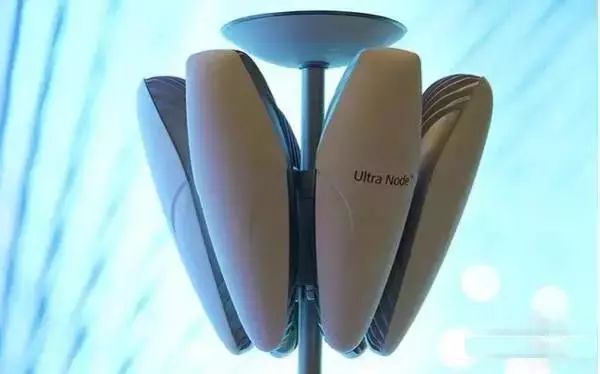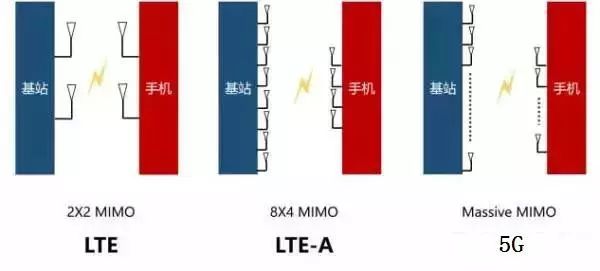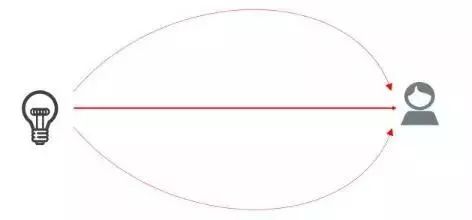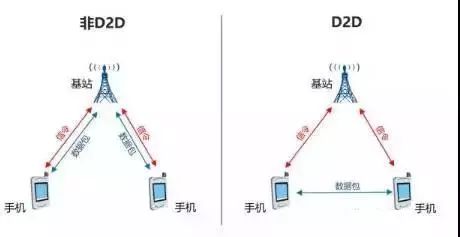A big wave. . .
Everyone knows that both radio waves and light waves are electromagnetic waves. . .
Electromagnetic waves have limited frequency resources and have different uses depending on different frequency characteristics. . .
We currently use radio waves for communication. . .
Radio waves are a type of electromagnetic wave, and its frequency resources are also limited. . .
â–¼The use of different frequency waves

Pay attention to the red font in the picture above. All along, we mainly use the intermediate frequency ~ ultra high frequency for mobile communication. . . With the development of 1G, 2G, 3G, 4G, the frequency of use is getting higher and higher. . .
Because the higher the frequency, the faster the speed, the wider the lane (band). . .
What is the specific frequency band of 5G?Last month, our Ministry of Industry and Information Technology issued a notice to clarify China's 5G initial IF frequency band:
3.3-3.6GHz, 4.8-5GHz two frequency bands
At the same time, the 24.75-27.5GHz and 37-42.5GHz high frequency bands are collecting opinions.
At present, the international trial mainly uses 28 GHz (this frequency band may also become the first commercial frequency band of 5G).
If we calculate by 28GHz, according to the formula we mentioned above:

Ok, this is the first technical feature of 5G -
Millimeter waveKeep going. . .
Since the frequency is so high, you must ask: "Why didn't we have high frequencies before?"
The reason is simple - not to use it. . . Can't afford it. . .
A distinctive feature of electromagnetic waves: the higher the frequency (the shorter the wavelength), the closer it is to linear propagation (the worse the diffraction capability). . .
Moreover, the higher the frequency, the greater the attenuation during propagation. . .
You see the laser pointer (wavelength 635nm or so), the light that is emitted is straight, and it will not pass if it is blocked. . .
Look at satellite communications and GPS navigation (wavelength around 1cm). If there is obstruction, there is no signal. . .
Moreover, the satellite's cauldron must be calibrated in the direction of the satellite. . . A little bit of it will have an impact. . .
If 5G uses high frequency bands, then its biggest problem is that coverage will be greatly reduced.
Covering the same area, the number of base stations required will greatly exceed 4G.
This is why in the past few years, telecommunications, mobile, and China Unicom have struggled for the low frequency band. . .
Therefore, based on the above reasons. . .
Under the premise of high frequency, in order to reduce the cost pressure on coverage, 5G must find a new way out. . .
First, it is a micro base station.
Micro base stationThere are two types of base stations, a micro base station and a macro base station. Look at the name to know that the micro base station is small, the macro base station is very big!
Used to be a large base station, built a large piece of coverage
In the future, more will be micro base stations, installed everywhere, everywhere.
â–¼ Does the micro base station look cool?

There are many types of micro base stations that can be flexibly integrated with the surrounding environment (disguise) without causing psychological discomfort to the user. . .
The smaller the base station, the more the number, the better the coverage and the faster the speed. . .
Where is the antenna going?Have you ever discovered that the big brothers had long antennas in the past, and the early mobile phones also had small antennas that stood out. Why didn’t we see the mobile phones with antennas?
The main reason is that the antenna is getting smaller. . .
Depending on the antenna characteristics, the length of the antenna should be proportional to the wavelength, approximately between 1/10 and 1/4.

The higher the frequency, the shorter the wavelength, and the antenna will become shorter!
Millimeter waves, the antenna also becomes millimeter. . .
This means that the antenna can be completely inserted into the phone, and even a lot of roots can be plugged. . .
This is the third biggest killer of 5G -
Massive MIMOMIMO is "Multiple-Input Multiple-Output", multiple antennas are transmitted, and multiple antennas are received.
In the LTE era, there has been MIMO, and 5G continues to flourish, becoming an enhanced version of Massive MIMO (Massive: Massive, Massive).

Mobile phones can plug a lot of roots, not to mention the base station. . .
In the previous base stations, there were only a few antennas. In the 5G era, it was not calculated by roots. . . "Antenna array". . .
â–¼The antennas are in a row. . . At first glance, look at the rhythm of a large piece. . .

However, the distance between the antennas should not be too close.
Due to antenna characteristics, multiple antenna arrays require that the distance between the antennas be kept above half a wavelength.
Don't ask me why, ask the scientist. . .
Are you straight? Still bent?
Have you seen the light bulbs shine?
In fact, when the base station transmits a signal, it is a bit like a light bulb.
The signal is emitted to the surroundings. For light, of course, it illuminates the entire room. If you just want to illuminate an area or object, most of the light is wasted. . .
The same is true for base stations, and a lot of energy and resources are wasted.
Can we find an invisible hand that binds the scattered beams?
The answer is: Yes.
This is--
BeamformingBeamforming:
The antenna array is arranged on the base station, and by controlling the phase of the radio frequency signal, the lobes of the electromagnetic wave after the interaction become very narrow, and point to the mobile phone that it provides, and can change direction according to the movement of the mobile phone.
This spatial multiplexing technology changes from omnidirectional signal coverage to precise directional service. The beams do not interfere with each other, providing more communication links in the same space, greatly improving the service capacity of the base station.

Straight can be bent into a bend. . . What else is the communication brick house can't do?
In the current communication network, even if two people face each other's mobile phones face-to-face (or mobile phone-transmitted photos), the signals are transited through the base station, including control signaling and data packets. . .
In the 5G era, this situation is not necessarily the case. . .
The fifth major feature of 5G is D2D, which is Device to Device.
D2DIn the 5G era, if two users under the same base station communicate with each other, their data will no longer be forwarded through the base station, but directly to the mobile phone. . .

In this way, a lot of air resources are saved, and the pressure on the base station is also alleviated.
However, if you feel that you don't have to pay for it, then you can see that Tucson is broken. . .
Control messages still have to go from the base station, and with spectrum resources, how can the operator's father let you go. . .
Din 41612 Connector,Din 41612 Vertical Female Connectors,Din 41612 Right Angle Plug Connectors,Din41612 Vertical Plug Press-Fit Connectors
Shenzhen Hongyian Electronics Co., Ltd. , https://www.hongyiancon.com